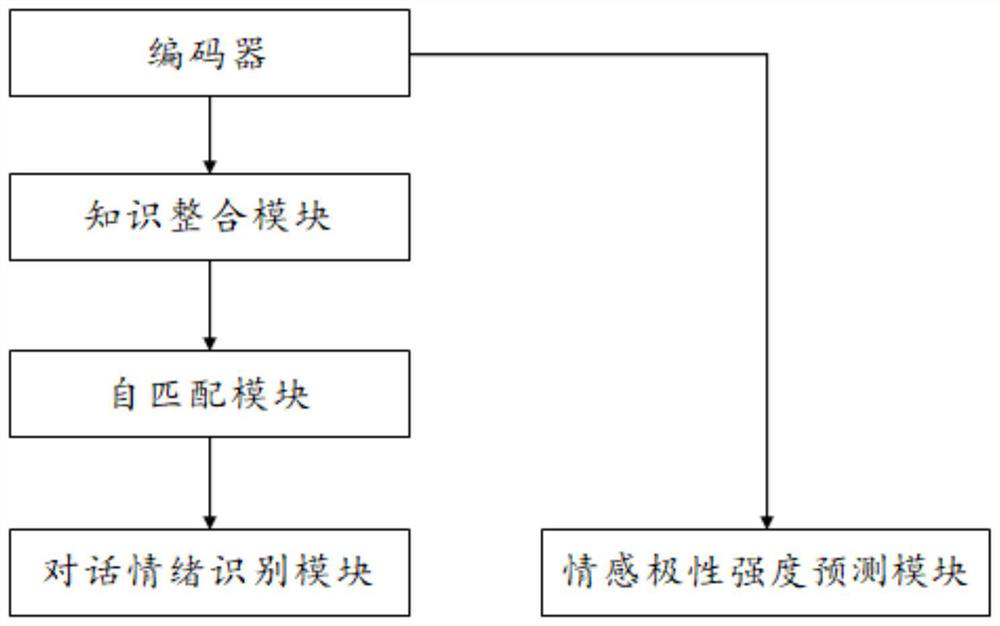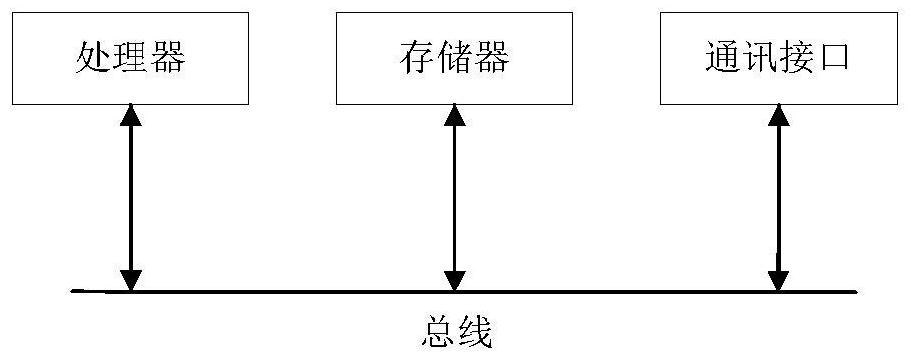Dialogue emotion recognition network model based on double knowledge interaction and multi-task learning, construction method, electronic equipment and storage medium
A multi-task learning and emotion recognition technology, applied in the field of natural language processing, can solve problems such as limited, weak models, ignoring the direct interaction between words and knowledge
- Summary
- Abstract
- Description
- Claims
- Application Information
AI Technical Summary
Problems solved by technology
Method used
Image
Examples
Embodiment 1
[0086] Embodiment 1 of the present application provides a dialogue emotion recognition network model based on dual knowledge interaction and multi-task learning (see figure 1 ), including: a task definition module, which is used for a set of dialogues in a given dialogue data set, and predicts the emotional label of each target utterance given the dialogue history information; the encoder uses the XLNet encoder to model the dialogue history Information; knowledge integration module, used to extract common sense knowledge, and obtain knowledge enhancement representation based on graph attention network; self-matching module, used for discourse-knowledge interaction; dialogue emotion recognition module, combined with dialogue history information to predict the current target discourse The emotion label of ; the emotional polarity strength prediction task module is used to introduce the knowledge strongly related to the main task into the model, and utilize the setting of multi-ta...
Embodiment 2
[0088] Embodiment 2 of the present application provides a method for constructing a dialogue emotion recognition network model based on dual knowledge interaction and multi-task learning (see figure 2 ), the method is specifically:
[0089] Step 1: Given a collection of dialogues in the dialogue data set, predict the emotional label of each target utterance given the dialogue history information;
[0090] The dialogue emotion recognition task is defined as follows: Given where i=1,...,N, j=1,...,N i , represents a set of dialogue pairs {utterance, label} in the dialogue dataset. Dialogue X contains N utterances, each utterance X i contains N i words, expressed as every X i by p(X i ) ∈ P, where P is the set of speakers. Discrete value Y i ∈S is used to represent sentiment labels, where S represents the set of sentiment labels, and |S|=h c . The goal of the dialogue emotion recognition task is to predict each target utterance X given the dialogue history informati...
Embodiment 3
[0143] Embodiment 3 of the present application provides an electronic device, see image 3 , an electronic device in the form of a general-purpose computing device. Components of an electronic device may include, but are not limited to: one or more processors or processing units, memory for storing computer programs that can run on the processors, connections to different system components (including memory, one or more processors or processing unit) bus.
[0144] Wherein, when the one or more processors or processing units are used to run the computer program, execute the steps of the method described in the second embodiment. The types of processors used include central processing units, general purpose processors, digital signal processors, application specific integrated circuits, field programmable gate arrays or other programmable logic devices, transistor logic devices, hardware components or any combination thereof.
[0145] Wherein, the bus refers to one or more of ...
PUM
 Login to View More
Login to View More Abstract
Description
Claims
Application Information
 Login to View More
Login to View More - R&D
- Intellectual Property
- Life Sciences
- Materials
- Tech Scout
- Unparalleled Data Quality
- Higher Quality Content
- 60% Fewer Hallucinations
Browse by: Latest US Patents, China's latest patents, Technical Efficacy Thesaurus, Application Domain, Technology Topic, Popular Technical Reports.
© 2025 PatSnap. All rights reserved.Legal|Privacy policy|Modern Slavery Act Transparency Statement|Sitemap|About US| Contact US: help@patsnap.com



